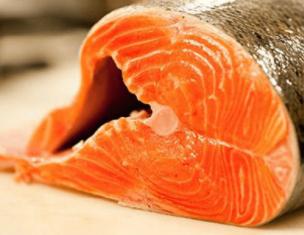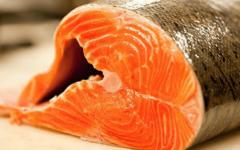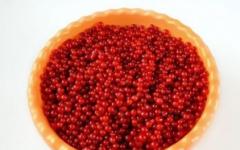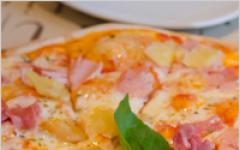Today, silicone baking molds have become widespread. And this is not surprising, because they have a lot of advantages for home and even industrial use. They are made from food-grade silicone, which can withstand high temperatures and does not emit any substances harmful to human health. And nothing burns. But some housewives still don’t know how to approach these forms. Let's find out!
What can you use silicone molds for?
As a rule, silicone molds can be used in both gas and electric ovens, sometimes in microwave ovens, but this should be indicated by a special mark on the packaging. Plus, they can go in the freezer and dishwasher.
In silicone molds you can not only prepare baked goods, but also prepare cold desserts and dishes with gelatin. Mousse cakes are worth mentioning separately. Some recipes cannot be completed at all without a special silicone mold.
Do I need to grease the mold with oil?
Before first use, any silicone molds must be rinsed with warm water to wash off process dust. It is usually recommended to oil silicone molds only the first time you use them, but some manufacturers recommend that you always do this.
What temperature should I set?
Pay attention to the maximum permissible temperature for baking; it should be indicated on the packaging. Sometimes these can be quite high temperatures, for example, 240-260 degrees, but if there is no such marker, then it is better not to exceed the temperature of 200 degrees to avoid deformation of the forms. In addition, direct contact with the fire source and burner, oven walls is not allowed, and also avoid using the “grill” mode. This will help maintain the perfect silicone surface for a long time.
How to put the dough in the mold
There are also some peculiarities in filling silicone molds. This is due to the fact that they are very flexible and when transferring the filled form, the dough can leak out. Therefore, before filling, the form should be placed on a wire rack or baking sheet, filled with dough and transferred to the oven together with the wire rack. Sometimes silicone molds are sold with special metal frames, which are designed so that when the dough increases in volume, the mold does not lose its original appearance. Empty pans should not be placed in a hot oven; this may also cause deformation of the surface.
How to remove baked goods from a silicone mold
Once the cake or cupcakes are ready, they are very easy to remove from the silicone molds as nothing sticks to them. Depending on the recipe, the hot or cooled product is removed by turning the mold over or tilting it to the side. You can press lightly on the bottom, thereby helping the cake to leave the mold. If, nevertheless, the products are slightly stuck, then you need to remove them by passing a silicone, plastic or wooden spatula between the walls and the cake. There is no need to use knives or other metal objects to avoid damaging the smooth surface. If the surface becomes scratched, there is a high chance that the baked goods will start to stick.
How to wash and store silicone molds
Silicone molds are very easy to clean with warm water, a sponge and mild dishwashing detergent. Do not use any harsh chemicals to avoid causing unexpected chemical reactions. Do not scrub silicone molds with metal brushes or brushes. If a piece of dough sticks somewhere, just soak the mold for a while in plain water and detergent; all dirt will come off easily.
Homemade baking is a sign of well-being in the family. Fresh cupcakes, baked with your own hands in a home oven using real ingredients, can lift your spirits and give you comfort. Silicone ones are of interest to almost every housewife who is passionate about this type of cooking. Silicone products have come to our kitchens relatively recently.
Maybe it's better to continue baking the old fashioned way?
The older generation of housewives, it happens, is very biased towards such forms, showing distrust. They argue that hard Teflon or tin molds are much safer, but this is some kind of silicone and there is no guarantee that it will not melt in the oven. And many people are simply more accustomed to using old and familiar baking tools. Another part of the housewives is sure that silicone baking molds are modern and safe products, and also very convenient to use. Such housewives will not exchange these molds for other containers under any circumstances. There is also a third part, this category of lovers of pampering their family with delicious pastries is looking closely at this product, wants to buy it, but they are beginning to be overcome by all sorts of doubts about the correctness of their intentions.
Truthful answers to questions about using silicone in baking
Are silicone baking molds harmful? What are they? How to properly use these products at home? Let's start looking at these issues right now.
First the good stuff

- Let's start with the fact that in the oven it turns out high and perfectly baked from the inside. This is partly, of course, due to the variety of designs of these devices, but partly also due to the fact that silicone, when heated, does not begin to violently fry a cupcake or pie. The heat goes inside, baking the cooked product.
- There is a great opportunity to use such forms not only for baking, but they can also be adapted for freezing. This type of container makes good jellied meat, various types of jellies, and homemade ice cream. Also, silicone baking molds can be placed in the oven straight from the refrigerator. The temperature range that these products can withstand ranges from -45 to +240 degrees on average.
- You can bake not only in the oven; these forms will cope with their baking task when using a microwave and gas oven.
- This material does not absorb odors at all. Meat and fish can be cooked in the same pan in which you bake the cake.
And then again about the good

There are many rumors and disputes about the harmfulness. In principle, silicone molds themselves are not harmful. But again, this depends on the integrity of the manufacturer. If you purchase forms from a well-known and well-established brand, you will not be in trouble. Therefore, in order not to be disappointed in the quality and safety of silicone baking molds, beware of fakes, which have always been and will always be. It is counterfeits that harm the reputation of honest manufacturers and can also cause harm to the health of consumers.
Molds are made from . The special characteristics of this type of material prevent it from reacting with hot metal objects, heated oil, and dough. Even breast implants are made from such pure silicone. Therefore, it is absolutely not harmful. But let’s return, perhaps, to the kitchen, to our baked goods, or rather, silicone molds.
Let's start baking
So, we didn’t find anything terrible in silicone molds, which means it’s time to start using this useful and safe device. Where should you start?
Before using a silicone baking pan, be sure to wash it thoroughly! Wash with dishwashing detergent, preferably using a soft brush. In retail outlets, such forms are in most cases not supplied with a sterile packaging container. Therefore, during storage in a warehouse and during loading, and even while the product is simply standing on a shelf in a store, contamination occurs.
Do silicone molds need to be greased before baking?

The mold is greased only before the initial placement in the oven. But you need to lubricate it very carefully, using only vegetable oil. The best thing is to pour oil into the bottom of the mold so that the fold from the bottom to the walls certainly does not remain dry and does not cause inconvenience in the future. If the form contains complex artistic elements (rose, fish), you need to very carefully coat all the recesses with a brush. Next, the molds should stand for 10 to 20 minutes to absorb. Now drain the excess oil and you can fill our molds with dough.

How to use silicone baking molds so that they last you a long time? First of all, you need to remember some features that exist when using products:
- The material is very flexible, so it is advisable to place the molds on a hard surface and then fill them with dough. For these purposes, you can use a regular enamel or tin baking sheet.
- Never cut a dish prepared in a mold directly in the same container! You can easily damage the silicone mold with a knife. For the same reason, don't pick at your baked goods with a fork.
- To easily remove the cake from the mold, the finished product must be removed from the oven, placed on a hard surface and left for five or ten minutes. After the specified time, the cake will easily move away from the bottom and walls of the pan.
- Be careful that your favorite silicone baking dish does not end up in the oven at a critical temperature for the dishes! When the positive temperature reaches more than 250 degrees, your form will turn into... no, not even a pumpkin, but stinking burnt lumps of fused silicone and dough.
- Silicone products bake at lightning speed. Due to the fact that the cookware does not need to be heated and the temperature immediately affects the dough, the usual cooking time may be reduced. Watch your baking, especially at first, until you get used to it.
- When, while trying to place the pan in the oven, you suddenly find that you slightly miscalculated the height of the product, you can simply take scissors and cut off the sides of the product to a suitable level.
Most modern housewives use silicone molds. They are often used for other purposes, such as shaping dishes or creating soap. If your baked goods burnt the first time you used these pans, you will probably never bake in them again. But don’t rush to send the dishes to the far shelf. The site "KnowKak.ru" will tell you the rules for using silicone molds, using which you can pamper your home with delicious baked goods.
Step 1. Before using them for the first time, they must be washed in warm water and detergent. Then rinse thoroughly in clean water and dry or pat dry with paper towels. Excess moisture can ruin baked goods.
.jpg)
Step 2. If this is your first time baking muffins in pans, grease the insides with vegetable oil or coat them with a thin layer of cooking spray. This step only needs to be done the first few times before baking.
.jpg)
Step 3. Do not place pans in a cold oven. It must be heated to the maximum temperature according to the recipe.
.jpg)
Step 4. Set the rack to a medium level unless the recipe specifies otherwise.
.jpg)
Step 5. Prepare the cupcake batter.
.jpg)
Step 6. Place a metal baking tray for baking cupcakes on a table or any other flat surface. You can use any flat shape, as long as it is positioned strictly horizontally. This is necessary for the same thickness of dough in the molds.
.jpg)
Step 7 Place silicone molds inside each cell.
.jpg)
Step 8 Pour in the dough. If there is no special mark on the inside of the molds, then pour the mixture to 2/3 of the volume of the molds.
.jpg)
Step 9 Place the cupcakes in the oven and bake for the time indicated in the recipe. But if you are preparing baked goods in silicone molds for the first time, then carefully check the readiness of the dish. Cupcakes may bake earlier than in a regular pan.
.jpg)
Step 10 Check the readiness of the cupcakes by checking the central pans. Pierce the dough with a match or toothpick. Their dry surface indicates the finished dish.
.jpg)
Step 11 When you are sure the cupcakes are completely baked, remove the pan from the oven. Be careful when doing this, as the silicone is very hot, but cools quickly.
.jpg)
Step 12 Cupcakes should be removed from silicone molds immediately, as once they have cooled, you will not be able to easily remove the baked goods.
.jpg)
Step 13 When the molds are completely cool, wash them in soapy water, then rinse. The material of these utensils is very flexible, so you can turn them inside out for better cleaning.
.jpg)
Step 14 Dry the molds and stack them for easy storage. The next time you use it, simply rinse it off with warm water to remove any dust.
.jpg)
If you use silicone molds correctly, you can bake an original and tasty dish. Bon appetit!
Baking forms, as you know, come in different forms. When our grandmothers and mothers were around, metal molds were used for pies, muffins and other baked goods. Large designs and small molds are not the most convenient to use, and they are not easy to clean later.
A glass mold is more convenient than a metal one; special heat-resistant glass is used for its manufacture. With the help of such forms, pies are often prepared in the microwave.
Using such forms is simple, but there are some nuances.
How to use silicone molds:
- Typically, these forms are highly flexible, so do not pour the dough into the mold before the mold is in the oven or oven. First, place the mold on the wire rack, and only then pour in the dough.
- The silicone mold can withstand temperatures ranging from minus forty to plus two hundred and forty, so feel free to put them in the freezer, oven, and microwave.
- You only need to grease the mold once - the first time you use the mold. You can do this before each baking, but there is no point in greasing - the baked goods are already good. And cleaning the form afterwards is not worth the effort.
- The bottom of the baked goods in a silicone form turns out slightly moist, and the crust is golden brown and crispy. The baking time both in the oven and in the microwave is approximately the same as if you use a regular baking sheet.
- You shouldn’t immediately remove the baked goods from the pan; wait about seven minutes. Therefore, tilt the pan to one side, and the baked goods fall out of the pan on their own.
It is worth mentioning such a device as siliconized paper. This is silicone-coated paper or food parchment. It is suitable for both frying and baking.
Silicone baking mats
Heat-resistant silicone mats are an excellent alternative to baking paper. They allow you to bake the product without using oil. The structure of the material is such that even burnt food will not stick to it.
The surface of the mat is subjected to uniform heating, which means that the product has virtually no risk of being burnt. The baking process also becomes uniform.

One such mat, according to recommendations, can be used 2000 times! Sheet mats are relatively cheap. They are lined on baking sheets instead of paper, and sometimes they are used for rolling out dough. Paper can still give a burning percentage, mats do not give such defects - and they are easy to wash later.
Baking in silicone molds in the oven: recipes
There are several recipes that, upon first preparation, make it clear how convenient silicone molds are.
Quick Chocolate Cherry Cupcakes - Ingredients:
- Cocoa powder – 40 g;
- Granulated sugar - 0.8-1 tbsp.;
- Grows. oil – 5-6 tbsp;
- Cherry – 350 g;
- Flour – 230 g;
- Baking powder – 1-1.5 l.;
- Water – 280-300 g;
- Salt - to taste.
Since these cupcakes get rave reviews, the recipe is worth remembering.
So, the cupcakes are prepared as follows::
- Mix all the bulk ingredients in a bowl - sugar, flour, cocoa, baking powder, salt.
- Add milk and water to this mixture.
- Remove the pits from fresh cherries and drain the juice from frozen cherries. Combine cherries with dough.
- Mix the dough with a whisk - the consistency should be runny, like thin sour cream.
- Pour the dough into a mold placed on a wire rack - use either one large round one or several small ones.
- Bake in the oven at 180 degrees until browned.
If you put the molds with the dough in the microwave, and not in the oven at 800 W, the muffins will be ready in 8-9 minutes.
Silicone baking mold: harm or safety
Is there any doubt that silicone molds are not harmful to health? The answer is simple, if you buy the form from a manufacturer with a good reputation, there will be no harm. But on the market today you can easily find suspiciously cheap forms that do not have a certificate, but have a specific smell.
This shape can only cause harm if you accidentally burn yourself on its edges. Therefore, when preparing food, especially in the oven, be careful and do not allow children into this process.
Old metal springform molds are already becoming vintage kitchen utensils; they have been replaced by convenient silicone devices. They can be used both in the microwave and in the oven many times without fear for the integrity of future baked goods.
A modern housewife should thank fate every day for the fact that she was lucky enough to live in the 21st century. Just 50 years ago, our mothers and grandmothers ran households in much less comfortable conditions. And they couldn’t even imagine how to bake without oil or how to bake in silicone molds. By the way, about forms. They appeared recently compared to other kitchen utensils, but many have managed to appreciate them. Although for those who are accustomed to more traditional materials, they still seem unworthy of trust. In their opinion, the same material cannot be used in medicine, in construction, and in everyday life, and at the same time be harmless. Let's figure out how things really are.
Let's start with the fact that silicone, by its very name, completely in vain scares many housewives. In fact, this modern material is harmless when handled correctly and has many advantages that benefit us. It is soft and pliable, but at the same time very durable. It can take any shape, therefore it is suitable as a material for making not only molds, but also potholders, brushes - almost any kitchen utensil. Finally, silicone products are simply beautiful! They decorate the kitchen and delight the hostess with their colorful colors.
Advantages of silicone:
- The silicone from which your baking dishes are made does not contain substances that could “release” when heated and poison your dishes. It is so harmless that it is used in surgery. Breast enlargement implants are made from it.
- For the same reason, the silicone form is not afraid of products with strong odors. Silicone does not absorb them because it does not interact with food at the chemical level.
- This material can withstand large temperature changes, so your silicone mold is a universal cookware. You can use it in both the oven and the freezer.
- Silicone molds save space in your kitchen - no other utensils can be folded, twisted, rolled up and stored compactly like this.
- Such flexibility and pliability of the material allows tableware manufacturers to show endless imagination. It is likely that any pattern, figure, fairy-tale character, architectural form has already found its embodiment in the form of a silicone model. This means your pie can have any of these styles.
- Despite the intricate configurations of many baking pans, you can rest assured that you won't be able to scrape the finished crust out of them later. You are a priori saved from this problem, because nothing sticks to silicone.
- Silicone has outstanding thermal conductivity properties. In practice, this means that it heats up quickly in the oven and thereby reduces cooking time. This form also cools down very quickly, so you don’t risk burning your hands.
- It is almost impossible to use silicone molds for other purposes, because they are perfect not only for sweet baked goods, but also for preparing all kinds of casseroles, stews and omelettes. Dough, jelly, chocolate, vegetables, meat, fish - silicone has no “contraindications”. You can even make it yourself in a silicone mold.
Disadvantages of silicone:
- The silicone mold always bends, and not just when it’s convenient for you. Fragile and delicate baked goods may be damaged when transporting the pan from the oven to the table. Just be careful not to let the crust sag too much and break.
- Lovers of crispy crust may not wait for it to appear. Silicone prevents sticking, browning and often makes the sides of baked goods smooth and shiny.
- Static electricity can build up in silicone. As a result, your cake may acquire the superpower of attracting dust.
- Not all manufacturers use 100% pure silicone as raw material. By saving on your purchase, you risk getting dishes with impurities. This form may smell unpleasantly like rubber, transfer this smell to products, and ultimately last less than a high-quality one.
- Silicone is afraid of knives and other sharp objects in your kitchen.
Rules for using silicone molds
- Use wooden tools rather than metal ones when cooking in silicone cookware. It is best to use silicone tools.
- To wash such dishes, choose gels and avoid hard sponges and abrasive cleaners.
- First put the mold in the oven, and then fill it with dough. This way you will prevent sagging, and, consequently, splashing and spilling.
- Do not allow the edges of the mold to touch hot surfaces or grates. Keep away from open fire.









